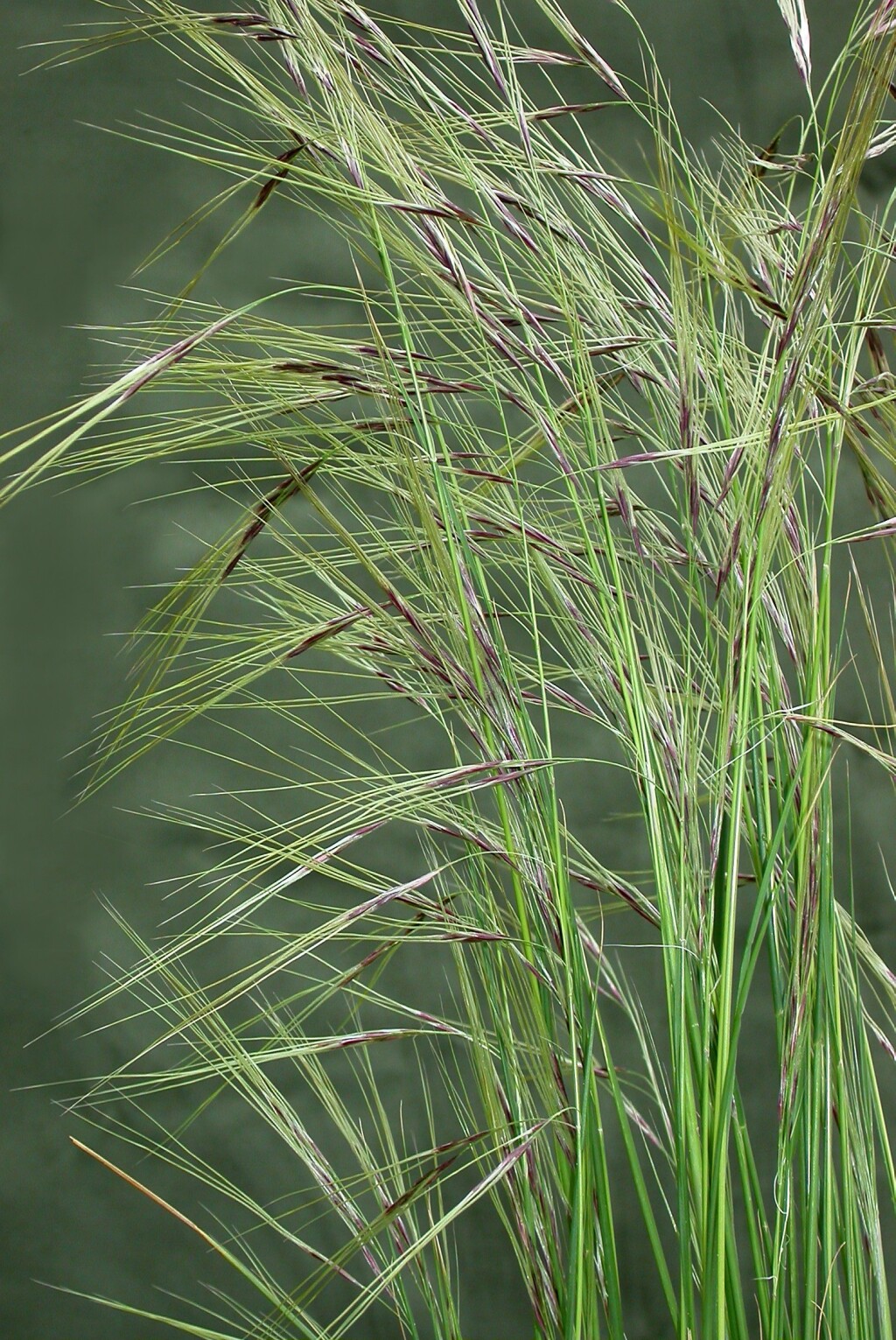Nassella neesiana
(Trin. & Rupr.) Barkworth Chilean Needle-grassTufted perennial, culms erect, to c.1 m high, nodes pubescent. Leaves glabrous or sparsely pubescent; blade flat or somewhat inrolled, to 30 cm long and 5 mm broad; ligule glabrous, to 3 mm long, sometimes obsolete. Inflorescence a loose, sometimes interrupted panicle to 40 cm long, the awns often twisting together at maturity. Glumes 16–20 mm long, strongly purplish, acuminate, subequal; lemma constricted toward the apex, 6–10 (mostly 8–10) mm long (excluding corona), pale brown at maturity, tuberculate, glabrous except near the callus and along the midrib; corona c. 1 mm long, excluding the slightly divergent apical spines 0.2–0.5 mm long; callus 2–4 mm long; awn twice bent, 60–90 mm long, 15–30 mm to the first bend, scabrous to pubescent; palea 1–2 mm long, hyaline, glabrous. Flowers mostly Oct.–Feb.
Wim, VVP, VRiv, MuF, GipP, OtP, WaP, Gold, CVU, GGr, DunT, NIS, EGU, HSF, HNF. Also naturalised SA, Qld, NSW, ACT, Tas. Native to South America. Locally common north and west of Melbourne (Whittlesea to Cressy, Ballarat area), mostly on basalt soils and often near watercourses, but progressively spreading on improved pasture, native grassland and road verges through the state (e.g. Beechworth, Tarnagulla, Maryborough, Warrnambool, Briagolong, Flinders). A Weed of National Significance.
Occasional plants have been observed with cleistogenes in basal leaf sheaths.
 Spinning
Spinning



